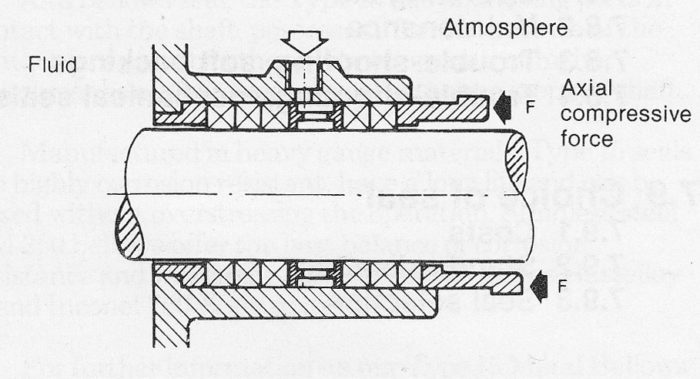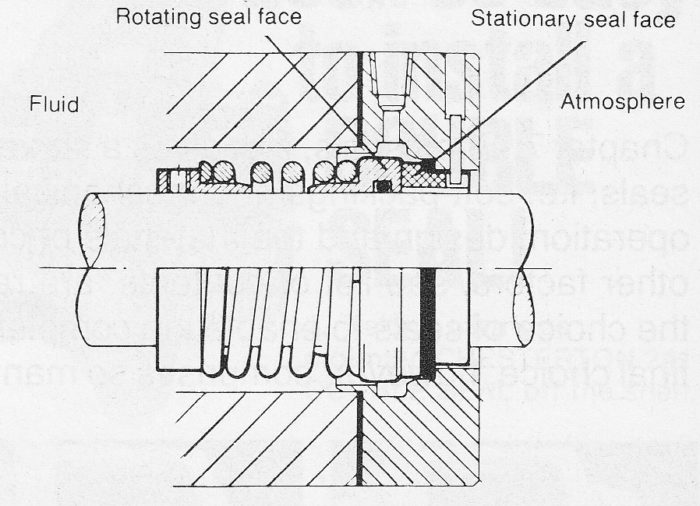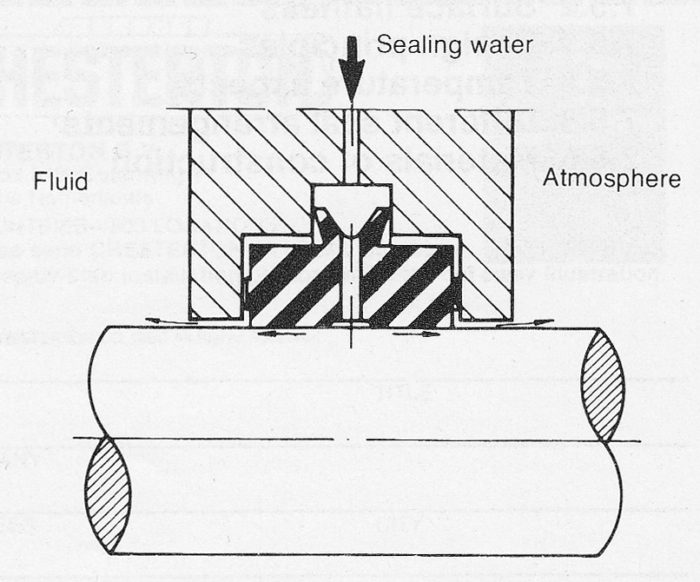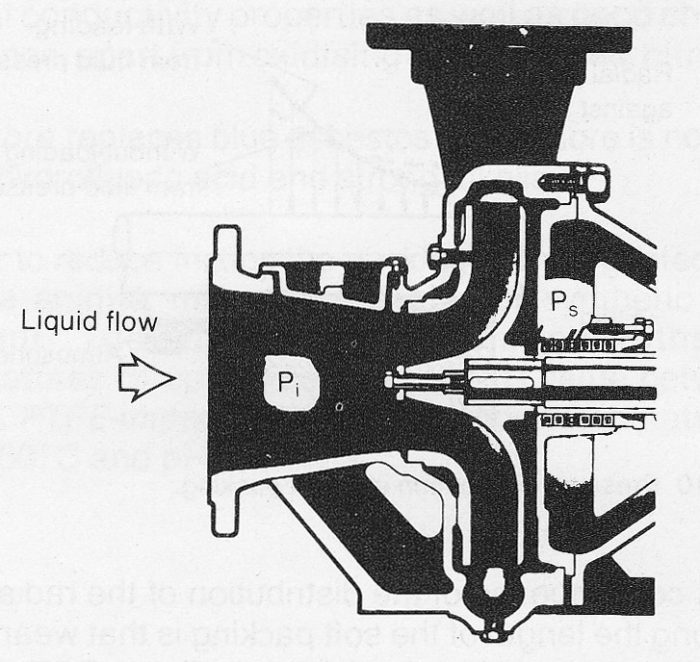5 Pump seal
Pump seal
The pump seal is the most exposed element in a pump and it is well worth devoting a great deal of attention to the choice, installation and maintenance of this seal. This section on shaft seals, gives a survey of existing types of seals. The most common seals, i.e. soft packings, lip seals and mechanical seals are treated with regard to their principles of operation, design and the materials of construction. Leakage, trouble-shooting and several other factors are reviewed. We have included certain technical guidelines for the choice of seals to enable the completely uninitiated to make a preliminary selection. The final choice, however, comprises so many aspects that the whole chapter should be studied carefully.
Choosing the right seal is essential to keep cost for spare parts and repairs low but other associated costs can be substantial, e.g. costs for leakage and stand-still costs which easily get ten times bigger than the pump itself. Pump seals must therefore be chosen with close attention to details that might jeopardize the operational life time of the seal. Apart from costs consideration must be given to environmental damage due to leakage, to the toxicity of the liquid, radio-activity or propensity to explosion or to solely the unpleasantness which working in a slippery environment implies.
The methods normally used for sealing a rotating shaft are:
- Soft packings for general cases where relatively large leakage can be allowed, and continuous supervision is present.
- Single mechanical seals for general cases where relatively little leakage and long service intervals are required.
- Double mechanical seals in the case of contaminated highly gaseous, toxic or certain hot or cold liquids, where very little leakage can be allowed.
- Hermetically sealed pumps, see Sealless / glandless, magnetic driven pumps in section 3.2.11 – 3.2.13 for further details.
Methods to seal of a pump shaft
Soft packings
A stuffing box with a soft packing material is the traditional seal for pumps, the pre-load being applied by means of an axial compressive force, figure 5a. A modern variant, figure 5b, applies pressure radially and gives a better pressure relationship.

Figure 5a Traditional soft packing with axial compressive force.

Figure 5b Modern soft packing with hydraulic radial pressure (p).
Mechanical seal
In a mechanical seal, sealing takes place between a stationary and a rotating axial face, see figure 5c. Together with soft packings, this constitutes the most common type of pump seal.

Figure 5c Mechanical seal with single driving spring.
Lip seal
Figure 5d shows a rubber lip seal which can be used at low pressures and speeds. It is rarely used for pumped fluid but as a bearing seal and secondary seal for outer quenching of a mechanical seal.

Figure 5d Lip seal
Hover seal
A rubber hover seal, see figure 5e, is used for moderate pressures and where dilution by the sealing water can be allowed in the process. It tolerates relatively large axial movements and is used for slurries.

Figure 5e Hover seal
Non-contact seals
An axial or radial clearance: see figure 5f, gives a relatively large leakage, which, however, in the case of a vertical shaft can easily be returned to the pumped liquid. It is used for vertical extended shaft pumps and for pressure reducing prior to other types of shaft seals.

Figure 5f Shaft seal with axial clearance.
Auxiliary pump
An auxiliary pump can be used to pump away leaks or to maintain a pressure equilibrium, see figure 5g. When the shaft is stationary some form of auxiliary seal is required. The design is used for difficult media at low pressures.

Figure 5g Auxiliary pump in the form of back vanes.
Operating conditions
A common feature of the different methods of sealing is that the condition in the seal area, see figure 5h, plays a decisive role in the design of the seal. The conditions are described by:
- the pumped medium with possible solid contaminants and gas content
- temperature which can deviate from that of the pumped medium by means of various cooling or flushing arrangements
- the shaft peripheral speed
- fluid pressure at the shaft seal
The pressure at the shaft seal ps can be calculated in the following manner:
ps = pi + pd
pi = Inlet pressure to the pump, i.e. at the pump suction.
pd = Pressure differential within the pump between inlet and seal area. which varies according to the type of pump. In the case of centrifugal pumps having a single sided inlet a normal axial force balancing by means of a rear-side gap with a relief hole or back vanes is approximately 30 percent of the pump’s pressure rise.

Figure 5h Pressure conditions in a centrifugal pump seal.
The pressure in the seal area ps and the peripheral speed ν are usually combined into a pν-value, in the same manner as in plane bearing calculations. At the same time, the pv-value provides a measurement for the frictional heat developed in the seal. In addition to the frictional heat, the temperature at the surfaces of the seal itself are also dependent on the fluid temperature and the heat dissipation.
